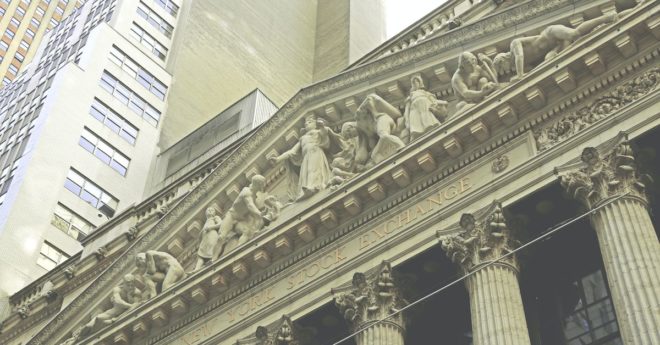Why are we waiting on cryptocurrency ETFs? Seriously.
I know there are now a few options to invest in bitcoin futures via an exchange-traded fund (ETF), and there are spot bitcoin ETFs available in Canada, but it seems like many financial advisors and writers are waiting with bated breath for a spot bitcoin ETF in the U.S. to suddenly open up the floodgates of digital asset investing to the entire world.
I think that a sizable cohort of ETF watchers is terribly misled – and even worse, is misleading others.
This article originally appeared in Crypto for Advisors, CoinDesk’s weekly newsletter defining crypto, digital assets and the future of finance. Sign up here to receive it every Thursday.
Advisors and investors have what they need now
The truth is that advisors and investors already have what they need to get started in crypto today. I’ve recently written about a recent proliferation in services that allow advisors to work with their clients’ digital assets, including Onramp Invest, BlockChange and Flourish.
There’s also no shortage of education and information services about digital assets, from this newsletter to a plethora of other sources, including blockchain developers themselves, who usually pride themselves on transparency.
Yet, the proponents of digital assets ETFs keep telling us that they will open access to new investors who either do not have the ability to learn about cryptocurrencies or who are prevented from accessing them by regulations.
The continuing appeal of a spot ETF
“In the end, being able to have direct exposure is most important,” said A.J. Nary, the founder of HeightZero, a technology platform intended to allow advisors and wealth managers gain direct exposure to and manage digital assets for their end clients, providing reporting for portfolio management and tax reporting systems. “A spot ETF would be attractive to some investors who just want something that trades on a traditional exchange and understand how it works. It’s really no different than investors who buy shares of a publicly traded company that holds a lot of bitcoin on its balance sheet as a way to get exposure to the asset. I think the interest is primarily coming from family offices and institutional investors.”
Currently, HeightZero permits access to bitcoin and ether, only because Nary and his partners believe these two cryptocurrencies are commodities, not securities, and therefore not governed by custody rules, which for the time being allows advisors to co-custody digital assets with their clients. (The custody question is one that has yet to be definitively answered by regulators.)
Another service, Swan Advisor Services, was launched by Swan Bitcoin. As its name suggests, it is focused solely on bitcoin, for reasons similar to HeightZero.
“We launched a third-party coin ownership service because an ETF, mutual fund, hedge fund or limited partnership structure is just a paper claim to the currency,” said Swan Advisor Services founder Andy Edstrom. “We think it’s important that clients have the ability to withdraw their holdings to self-custody and cold storage when they’re ready, and we’re prepared to help educate them on how to do it. The expectation of ETF fans is that people are years or decades away from understanding self-custody or collaborative custody with an advisor or that for some it will never happen. But I think the industry is ready to educate them and help them do it themselves.”
Spot ETFs are enticing, however, because they plug so easily into existing financial infrastructure, whether it be advisors’ current portfolio management software or a client’s account aggregation dashboard on a portal or personal finance application.
The current state of digital assets products
They also represent a noticeable improvement from existing digital assets products in the U.S., said Dan Eyre, the CEO of BITRIA, formerly Blockchange, a turnkey asset management platform for digital assets. (A turnkey asset management program allows independent financial advisors, typically fiduciaries, to outsource the management of some or all of their clients’ assets.)
“The Grayscale Bitcoin Trusts and BitWise index products of the world are pretty inefficient, they have no mechanism to tie back into the net-asset value, so they have these wild swings where it might trade at a 30% premium one day and a few months later have a 21% discount to net asset value,” said Eyre. [Editor’s note: Grayscale is owned by Digital Currency Group, the parent company of CoinDesk.] “You don’t have the same problem with a spot ETF. It’s a simple instrument that offers fairly efficient access to the speculative nature of bitcoin prices. It’s a starting point.”
Ben Cruikshank, the founder of fintech Flourish, feels similarly about the prospects of spot crypto ETFs, even though his platform is designed to enable collaborative custody.
“The needs of the crypto community are definitely different than the needs of the advisory community, because in the crypto community there’s a lot of mantras and thinking around self-custody,” said Cruikshank. “As an advisor, on average, one of my clients would forget their email password at least once a week, so how do I work with them on keeping their private keys safe? People work with advisors because they want their financial lives to be simpler, and self-custody feels a lot more complex than outsourcing custody to a qualified custodian. We think that today, the clients of advisors will want to outsource custody.
“We think that, increasingly, people will look to outsource the custody of their digital assets,” Cruikshank said. “Remember that 40 years ago it was common to keep stock certificates and bearer bonds in a safe deposit box, but now custodians like Fidelity and Schwab keep those assets secure on our behalf. Fundamentally, we believe clients will want this to be simple.”
And this simplicity and security, more than anything else, may be why so many advisors feel like true spot cryptocurrency ETFs are going to be worth the wait.




